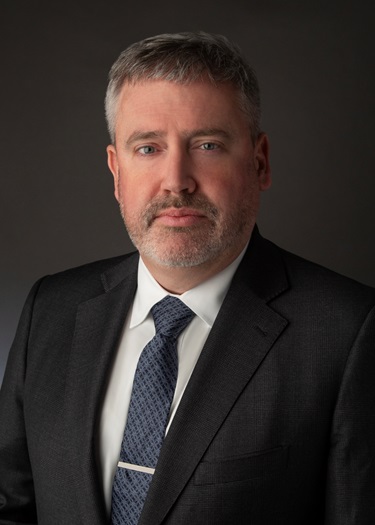Global Life Sciences Update
Statutory Change to New Chemical Entity Exclusivity Provision May Have Impacts for Scope of Patent Term Extension
Codifying the “Active Moiety” Approach to New Chemical Entity Exclusivity
Most press coverage to date has focused on the fact that the EIA codified longstanding Food and Drug Administration (FDA) practice by replacing the phrase “active ingredient” in the NCE exclusivity provisions of the FDCA with the phrase “active moiety.”3 When NCE exclusivity applies, FDA may not approve any new drug applications (NDAs) submitted under Section 505(b)(2) or abbreviated new drug applications (ANDAs) under Section 505(j) that reference the NCE product for a period of five years.4
FDA has long maintained that “active ingredient,” for NCE exclusivity purposes, does not refer to the substance identified as the active ingredient in the FDA-approved labeling. Rather, in its NCE regulations, FDA interpreted “active ingredient” to mean the “active moiety” of a product, which is the “molecule or ion, excluding those appended portions of the molecule that cause the drug to be an ester, salt (including a salt with hydrogen or coordination bonds), or other noncovalent derivative (such as a complex, chelate, or clathrate) of the molecule, responsible for the physiological or pharmacological action of the drug substance.”5
The “active moiety” approach often limits what drugs can be eligible for NCE exclusivity. Lawsuits challenging FDA’s application of its active moiety approach have had some success,6 and citizen petitions routinely ask FDA to abandon or alter its approach.7 By codifying the active moiety approach in the statute, Congress has sided with the agency and, presumably, reduced the number of challenges FDA will receive in the future.
Repercussions for Patent Term Extension
Although the EIA clearly sided with FDA on the NCE question, Congress appears to have simultaneously rejected a different agency interpretation. The issue arises from how Congress codified FDA’s “active moiety” interpretation. Congress could have left “active ingredient” in place in the NCE provision and simply defined the phrase to mean “active moiety.” By choosing to instead remove and replace “active ingredient,” Congress clarified that “active ingredient” did not and does not mean “active moiety.”
This will have important repercussions for PTE proceedings. The 1984 Hatch-Waxman amendments created a process by which the period of a patent covering an approved drug or biological product can be restored to account for time consumed by the FDA approval process.8 PTE eligibility depends on six statutory criteria,9 including that “the permission for the commercial marketing or use of the product after such regulatory review period is the first permitted commercial marketing or use of the product under the provision of law under which such regulatory review period occurred.”10 For a drug, the “product” is the “active ingredient of a new drug, antibiotic drug, or human biological product (as those terms are used in the [FDCA] and the Public Health Service Act) ….”11 Jurisdiction over the PTE process is shared by FDA and the U.S. Patent and Trademark Office.
In part because the phrase “active ingredient” appeared in both the NCE exclusivity provisions and the PTE statute, the agencies have sometimes argued (generally without success) that FDA’s more restrictive “active moiety” interpretation should also govern PTE eligibility.12 Other litigants have as well, and, last year, the U.S. Court of Appeals for the Federal Circuit once again rejected the argument and held that the “active ingredient” for PTE purposes is “defined by what is approved and is specified on the drug’s label.”13
Through the EIA, Congress sided with the Federal Circuit and firmly rejected the possibility that “active ingredient” could mean “active moiety” in the PTE context. Importantly, the broader definition of “active ingredient” means that manufacturers of complex drugs deemed ineligible for NCE exclusivity – because they are not completely characterized, or may share an “active moiety” with previously approved drugs – may nonetheless be eligible for PTE for a relevant patent. Companies should therefore review whether and to what extent the EIA affects their strategies not only for regulatory exclusivity, but also for their intellectual property portfolio.
1 S. 415 (117th Cong.), https://www.congress.gov/117/bills/s415/BILLS-117s415enr.pdf.
2 Sen. Bill Cassidy, Press Release, “Cassidy, Smith, Marshall Introduce Legislation to Lower Prescription Drug Costs” (Feb. 24, 2021), https://www.cassidy.senate.gov/newsroom/press-releases/cassidy-smith-marshall-introduce-legislation-to-lower-prescription-drug-costs.
3 S. 415, § (a)(1)(A)-(B) (117th Cong) (amending 21 U.S.C. § 355(c)(3)(E) and (j)(5)(F)).
4 21 U.S.C. § 355(c)(3)(E)(ii), (j)(5)(F)(ii). Additionally, 505(b)(2) applications or ANDAs referencing the NCE applications and including paragraph IV certifications may not be submitted to FDA for four years from the approval date of the NCE. Id.
5 21 C.F.R. § 314.3(b).
6 Compare, e.g., Amarin Pharm. Ireland Ltd. v. FDA, 106 F. Supp. 3d 195 (D.D.C. 2015), with, e.g., Actavis Elizabeth LLC v. FDA, 625 F.3d 760 (D.C. Cir. 2010).
7 See, e.g., Citizen Petition from Foley Hoag LLP (Vifor Fresenius Medical Care Renal Pharma France) (Apr. 15, 2016), https://www.regulations.gov/document/FDA-2016-P-1163-0001.
8 See generally 35 U.S.C. § 156.
9 See id. § 156(a)(1)-(5), (d)(1).
10 Id. § 156(a)(5)(A) (emphasis added).
11 Id. § 156(f)(2)(A).
12 See, e.g., Glaxo Operations UK Ltd. v. Quigg, 894 F.2d 392, 394 (Fed. Cir. 1990); PhotoCure ASA v. Kappos, 603 F. 3d 1372, 1375 (Fed. Cir. 2010).
13 Biogen Int’l GmbH v. Banner Life Sciences LLC, 956 F.3d 1351, 1356 (Fed. Cir. 2020).
Attorney Advertising—Sidley Austin LLP is a global law firm. Our addresses and contact information can be found at www.sidley.com/en/locations/offices.
Sidley provides this information as a service to clients and other friends for educational purposes only. It should not be construed or relied on as legal advice or to create a lawyer-client relationship. Readers should not act upon this information without seeking advice from professional advisers. Sidley and Sidley Austin refer to Sidley Austin LLP and affiliated partnerships as explained at www.sidley.com/disclaimer.
© Sidley Austin LLP
Contacts
Related Resources
Capabilities
- Stay Up To DateSubscribe to Sidley Publications
- Follow Sidley on Social MediaSocial Media Directory

